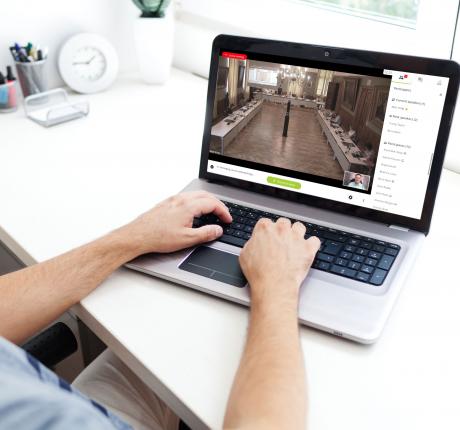
TELEVIC CONFERENCE
4 critical success factors for efficient formal meetings
Discover 4 critical success factors to streamline your formal meetings and gain more efficiency, better decision-making, and smoother meeting management.
Better formal meetings make better decisions - 4 critical success factors for efficient formal meetings
A formal meeting, as opposed to an unformal meeting, is a planned gathering with a clear purpose: it will result in making decisions and, consequently, in taking actions. Traditionally, a formal meeting includes a chairperson and meeting participants, who together will address a list of agenda topics. Formal meetings are usually confidential. But they can also be open to the public for transparency reasons (for instance city council meetings).
The keywords for successful formal meetings and well-made decisions are PREPARATION, EQUIPMENT, MANAGEMENT and FOLLOW-UP. These are in fact the 4 critical success factors for efficient formal meetings such as local city councils. The successful outcome of the council meeting will mostly depend on how well it was prepared and managed in the first place. But don’t forget that the end and follow-up of a formal meeting are equally or even more important than its initial purpose. And always remember that in meetings – like in most things in life – there is always room for change or improvement.

BEFORE THE MEETING
Success factor #1: Preparation
A formal meeting needs to be structured and prepared beforehand. Make sure everyone involved is clearly informed about the purpose, date, time, place and duration of the meeting. Prepare a clear agenda and define the voting items.
If decisions need to be made, only a limited number of key people should be involved. Their roles should be clear up front: are they decision makers, advisers, partners, …? Clearly define the way decisions will be made: by vote, by unilateral decision, by consensus or by consultation. Appoint a chairperson and/or meeting manager to moderate the discussion and to make sure the schedule is respected.
Finally: adequately prepare all support materials and documents that need to be shared with or shown to the meeting participants.

Success factor #2: Equipment
Select the right tools for the right meeting and for the right meeting room. Always make sure that the equipment is ready and tested before the start of the meeting. You will avoid unnecessary waste of time and loss of attention, efficiency, and productivity.
A smart room layout takes every component into consideration. Hardware to be thought of includes conferencing units, cameras, monitor, etc. The software may for instance be Microsoft Teams, Confero Meet, …
If you need to share presentations, make sure the adequate equipment is there, so everyone can follow. And if live streaming or recording is foreseen, install and test the relevant equipment beforehand.

DURING THE MEETING
Success factor #3: Management
Good meeting management keeps the meeting experience dynamic, and all participants focused and on track. The most crucial factors to this aspect of the meeting are good audio and video quality, and adequate time management.
In term of decision-making and transparency, make sure that all participants can vote, whether they are in the room or attending remotely. Make sure that voting results can be clearly displayed. And define what actions need to be taken based on the results. Let every participant know what is expected of them to implement the decisions and set clear and achievable goals

AFTER THE MEETING
Success factor #4: Follow-up
Words vanish, writing remains. Send meeting minutes to each participant, including a recap of the decisions made, a plan of action and an overview of everyone’s role. Provide active and regular follow-up on the implementation progress of the decisions.
Ask the participants to provide feedback about their meeting experience. Was the meeting valuable for them? Did they understand clearly what actions to take after the meeting? Were they able to contribute to the discussions?
Don’t forget to inform people who were not involved in the decision-making process but are impacted by it.



